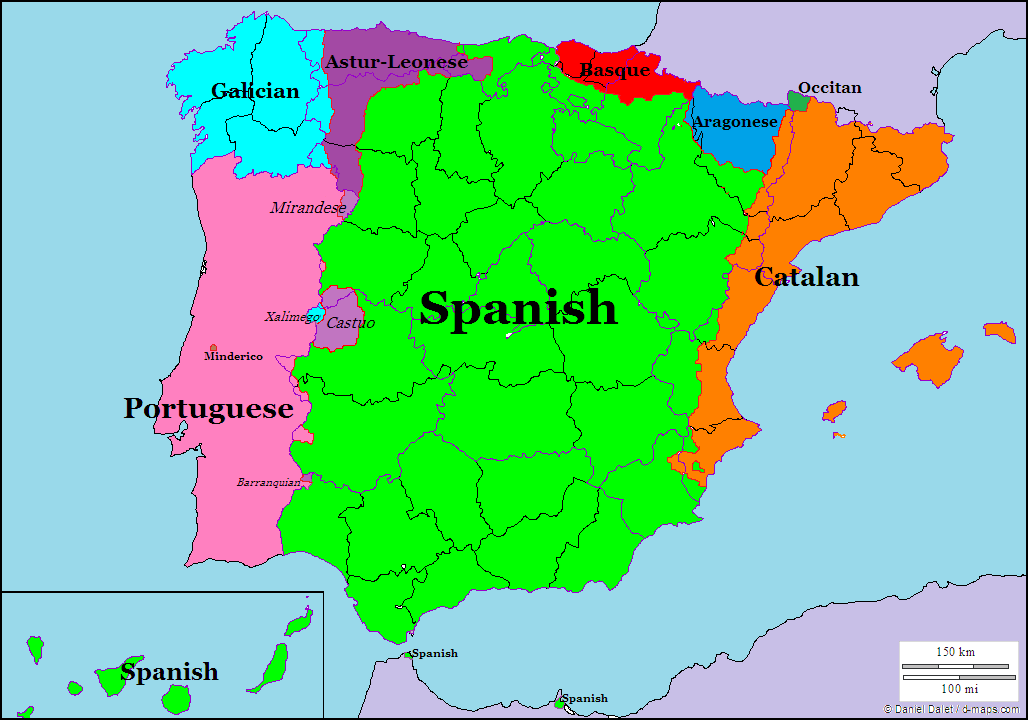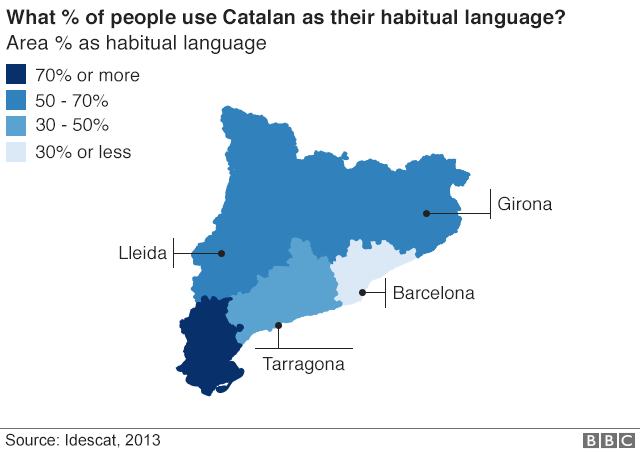Catalan vs. Spanish: What’s the difference?
Spain is not a monolingual nation. While over 98.8% of people speak Spanish in Spain, the other official languages in the country are Euskara, Catalan, and Galician. There are over 4 million native speakers of Catalan in Spain and over 10 million worldwide. Let’s explore the differences and similarities between the Catalan language and Spanish.
- Are Catalan and Spanish the same?
- Catalan vs. Spanish Examples
- Political difference between Catalan and Spanish
- Catalan language vs. Spanish – there is a difference
Enjoy your language learning journey
Book now
Are Catalan and Spanish the same?
No, they are not. Catalan is a distinct language from Spanish. It is one of four official languages of Spain and the sole official language of the small country of Andorra. Both Catalan and Spanish are Western Romance languages based on Latin. Spanish and Portuguese belong to the Iberio-Romance family. Meanwhile Catalan is an Occitano-Romance language with Occitan, a language of Southern France.
The name Catalan comes from the northeastern region of Catalonia in Spain. Travelers will know its famous capital Barcelona. Catalan is also spoken in the neighboring regions of Valencia (known there as Valencian language), the Balearic Islands including Mallorca, and the island of Ibiza. In fact, it is the official language of Ibiza.
Education in Catlan vs. Spanish
Regions of Spain have autonomy over their respective education systems. In Catalonia and the Balearic Islands, public education is conducted in both Catalan and Spanish with Catalan as the primary language. In Valencia parents can choose education fully in Valencian language (Catalan) or fully in Spanish with Catalan as a subject.
Public education in Andorra has three separate systems with three main languages of instruction: Catalan, Spanish, and French.
Catalan vs. Spanish Examples
In some ways, the difference between Catalan and Spanish is not so huge.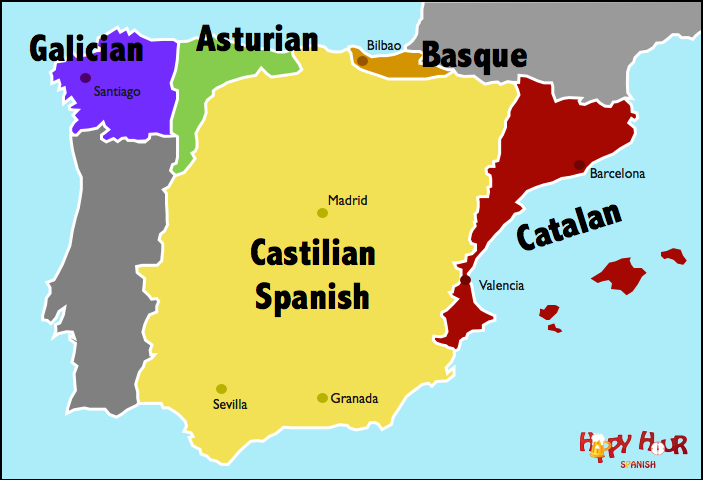
Pronunciation
There are pronunciation differences between Catalan and Spanish. In Spanish, there are five vowels and five pronunciations for those vowels. They do not change. In Catalan, the “a”, “o” and “e” change their pronunciation whether they are stressed or unstressed. Also, there are more vowels in Catalan (8) that do not exist in Spanish, like é (closed e), è (opened e), ó (closed o), ò (opened o), and ú (always closed).
Spanish: casa /kasa/
Catalan: casa /kazə/ – The first a is stressed, the second a is unstressed like the second e in telephone /teləfon/.
English: house
X – In Catalan the “x” makes a /sh/ sound as in /ship/ in English.
Spanish: chocolate /chokolate/
Catalan: xocolata /shoocoolatə/
Ñ – the Spanish ñ does not exist in Catalan. You will see the “ny” spelling for that sound.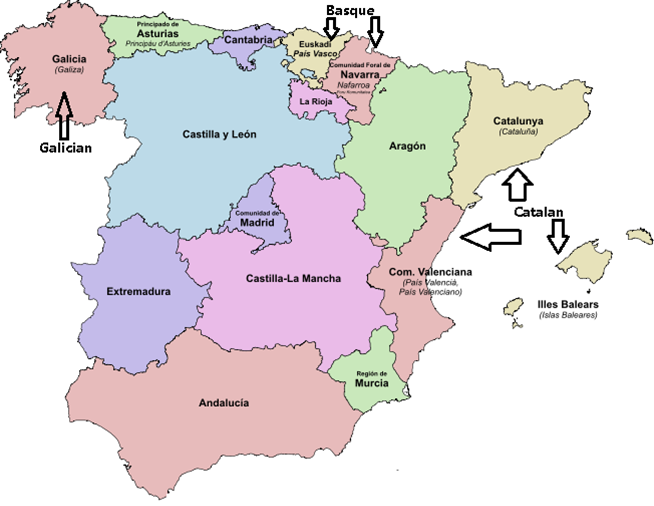
Catalan: Catalunya
Spanish: Cataluña
English: Catalonia
“Ҫ” – As a letter, doesn’t exist in Spanish. In Catalan “ç” is an /s/
Catalan: dolç /dols/
Spanish: dulce /dulse/
English: sweet
“G” – Has two sounds in Catalan /g/ as in /girl/ and /ʒ/ as in vision /viʒun/
Catalan: gerro /ʒeroo/
Spanish: jarrón /xaron/
English: vase
Grammar
There are grammatical differences in past, present, and future tenses in Catalan vs. Spanish. Let’s focus on basic conversational phrases as there are too many to cover in one article:
Catalan: Hola! Bon dia! Com estas?
Spanish: ¡Hola! ¡Buenos días! ¿Cómo estás?
English: Hello! Good morning! How are you?
Catalan: Bé, gràcies. I tu?
Spanish: Bien, gracias. ¿Y tú?
English: Well, thank you. And you?
Catalan: Adéu. Fins després!
Spanish: Adiós. ¡Hasta luego!
English: Goodbye. See you later!
Catalan: On és el bany?
Spanish: ¿Dónde está el baño?
English: Where is the bathroom?
Catalan: Em dic Alison.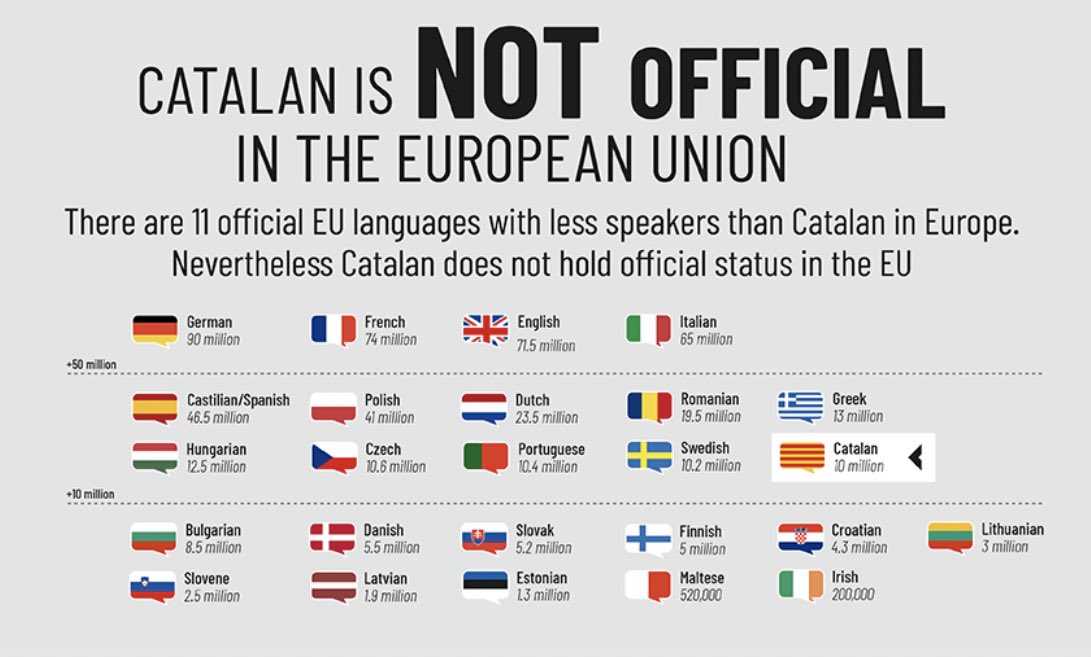
Spanish: Me llamo Alison. ¿Cómo se llama?
English: My name is Alison. What is your name?
Catalan: Parla espanyol?
Spanish: ¿Habla español?
English: Do you speak Spanish?
See difference between Catalan and Spanish in punctuation? Catalan grammar doesn’t use inverted symbols.
Enjoy your language learning journey
Book now
Directional Signs
In Valencia, Barcelona, and Ibiza directional signage will be in Catalan. Here are some basic directional signs in Catalan language vs. Spanish if you’re visiting or moving there.
Catalan: No hi ha sortida
Spanish: No hay salida
English: No exit
Catalan: Prohibit el pas
Spanish: Prohibito el paso
English: No entry
Catalan: Respecti la distancia de seguretat
Spanish: Mantega la distancia de seguridad
English: Maintain social distance
Political difference between Catalan and Spanish
Catalan language is a source of pride for those regions that speak it.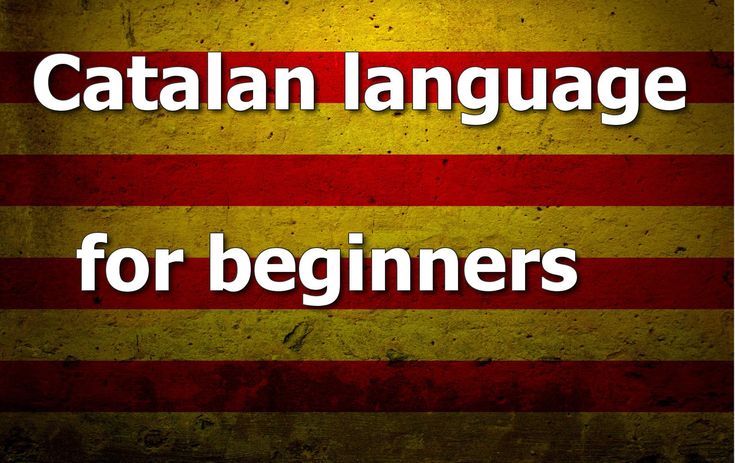
Speaking Catalan is not without controversy. Traffic court rulings have challenged Catalan directional signage, renewing discussions about the erasure of Catalan language. There is also an independence movement that, as recently as 2017, seeks to separate Catalonia from Spain.
Catalan language vs. Spanish – there is a difference
Clearly Catalan is a distinct language from Spanish when it comes to grammar, spelling and pronunciation. The difference between Catalan and Spanish also involves important cultural and political knowledge about Spain. If you go on vacation to Barcelona, chat with your Catalan-speaking neighbors with basic phrases in Catalan and see how they respond. Learn more about Spanish culture and languages with Lingoda by speaking with a certified instructor from Spain today.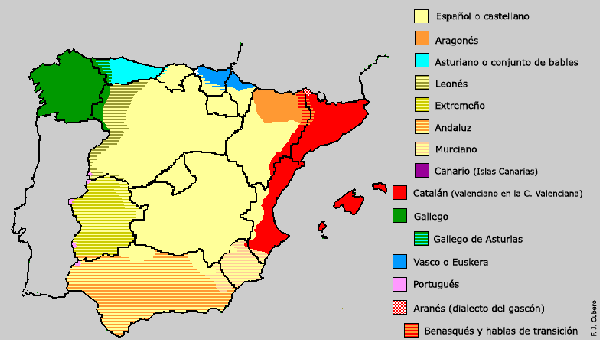
Enjoy your language learning journey
Book now
Alison Maciejewski Cortez is Chilean-American, born and raised in California. She studied abroad in Spain, has lived in multiple countries, and now calls Mexico home. She believes that learning how to order a beer in a new language reveals a lot about local culture. Alison speaks English, Spanish, and Thai fluently and studies Czech and Turkish. Her tech copywriting business takes her around the world and she is excited to share language tips as part of the Lingoda team. Follow her culinary and cultural experiences on Twitter.
Spanish vs Catalan – A Language Comparison
A Spanish student arrives to Barcelona, gets out of the plane and the first thing they notice is that… they don’t recognize the words in the signs! Were all their lessons rubbish? No: the signs are in Catalan! (Actually, in the airport Spanish and English are also featured in the signs, but in a smaller font size).
Many travelers are surprised to see that Catalan is so prominent in the local society.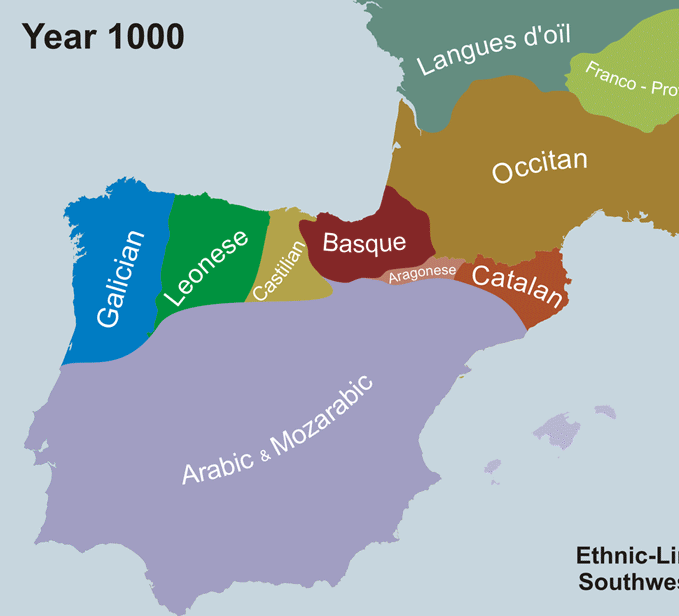
Why you should never say “Catalan dialect”:
Is Catalan a dialect? The answer is no.
According to Wikipedia, a “dialect is a a variety of a language that is a characteristic of a particular group of the language’s speakers. And that is not the case of Catalan. Catalan is not a way of speaking Spanish, but a complete language on its own, with different grammar, sounds and words.
Some people call Catalan a dialect in a pejorative way (it is well known that Spanish and Catalan communities don’t always like each other much, unfortunately…).
This is a silly video I recorded some years ago for a family I showed around that were very interested in Catalan language and asked me to learn some basic words. Yes, it’s a bit cliché, but… I find it very cute!
Origin of Catalan and Spanish languages
Both Spanish and Catalan are an evolution from Latin, brought by the Romans more than 2000 years ago. But it took almost 1000 years for Latin to break apart and become the current European Romance languages. Catalan and Spanish but also Portuguese, Italian, French and Romanian are all cousin languages. And the origins of Castilian Spanish vs Catalan are already diverse. The center of Spain (Castilia) was more in touch with Iberian and Celtics, whereas Catalonia was more open to the Mediterranean sea and connected to the Occitan world beyond the Pyrenees.
The oldest complete text in Catalan is the Homilies d’Organyà, a religious piece from the end of the 1100’s.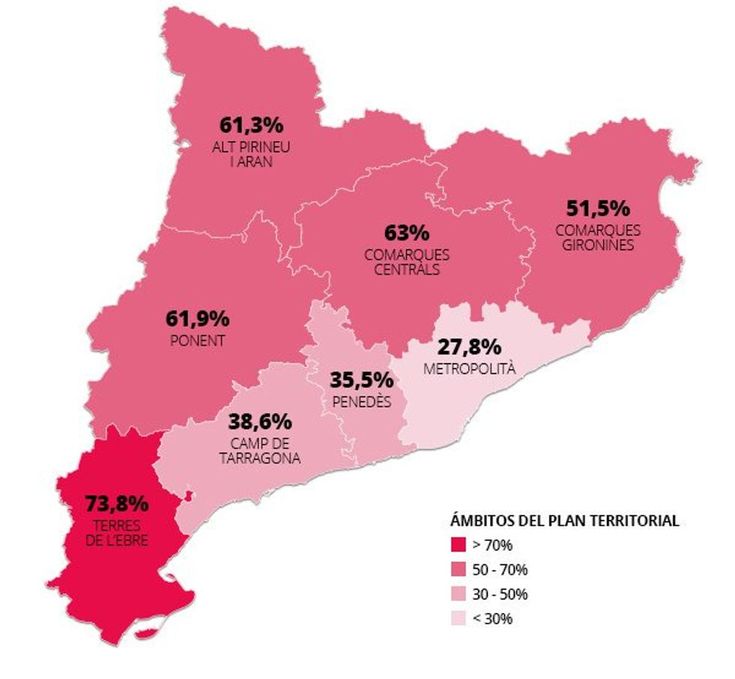
Number of speakers and territory
Through the Spanish domination after the conquest of America, Spanish rooted in most of Central and South America. So the word Spanish applies to any variety of Spanish language, spoken in Latin-America or in Spain. Instead, Castilian or Castellano is the way it’s spoken in Spain, the Spanish from Castilia, to be more precise.
Spanish is the second most spoken language by mother tongue (after Chinese), with over 463 milion native speakers – 47 milion of which in Spain. Catalan speakers are bilingual. Catalan is a co-official language in Catalonia, the Balearic Islands and Valencia. It is also the sole official language in the tiny country of Andorra.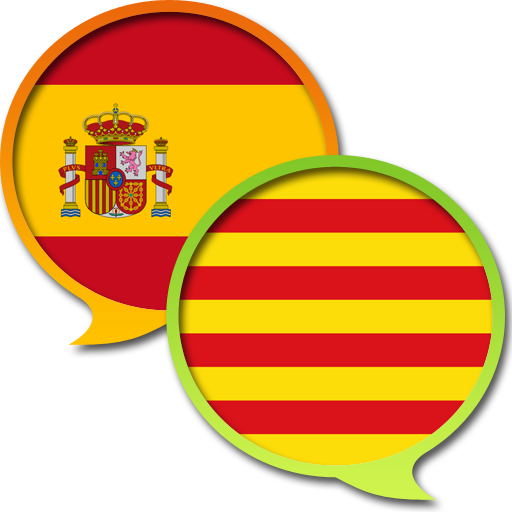
Interestingly, the number of people who can understand Catalan but don’t speak it would be around 11 million. And that’s explained because it’s common to find Spanish, French or Italian speakers in Catalan-speaking areas that don’t speak Catalan, but not a Catalan speaker that doesn’t speak the main language of their country. As for Andorra… people born and raised there are usually trilingual. Being a tiny country located between France and Spain and heavily depending on tourism, speaking both languages is a must for them.
So many different sounds and letters
One of the main Catalan and Spanish differences are sounds (or what linguists call phonemes). This is specially visible when examining vowels. In Spanish there’s only one sound for each vowel, while in Catalan there are two sounds for “e” and two sounds for “o“.
The close-mid e sounds like the e in dress in British English) and the open-mid e sounds more like dress in American English). Don’t get frustrated if you don’t get the difference: my brother had a hard time picking it up for school, even if he’s a Catalan native and pronounces the difference e correctly!
Same happens with o: there are two phonemes in Catalan for o: the open-mid o like thought in English, and the close-mid o like goat in American English. To this we must add the Schwa (the infamous “vocal neutra”, feared by Catalan students who always have a hard time to figure out if they should write an a or an e. In English you find it in words like comma. And there’s also very subtle variations when two vowels combine in diphthongs – but discussing that would be too much for the scope of this blog post.
As for consonants, Catalan doesn’t have the voiceless velar fricative (sorry, I’m getting too freak here: have you heard Spaniards say “jamón“? or can you say “loch” in a very strong Scottish accent?).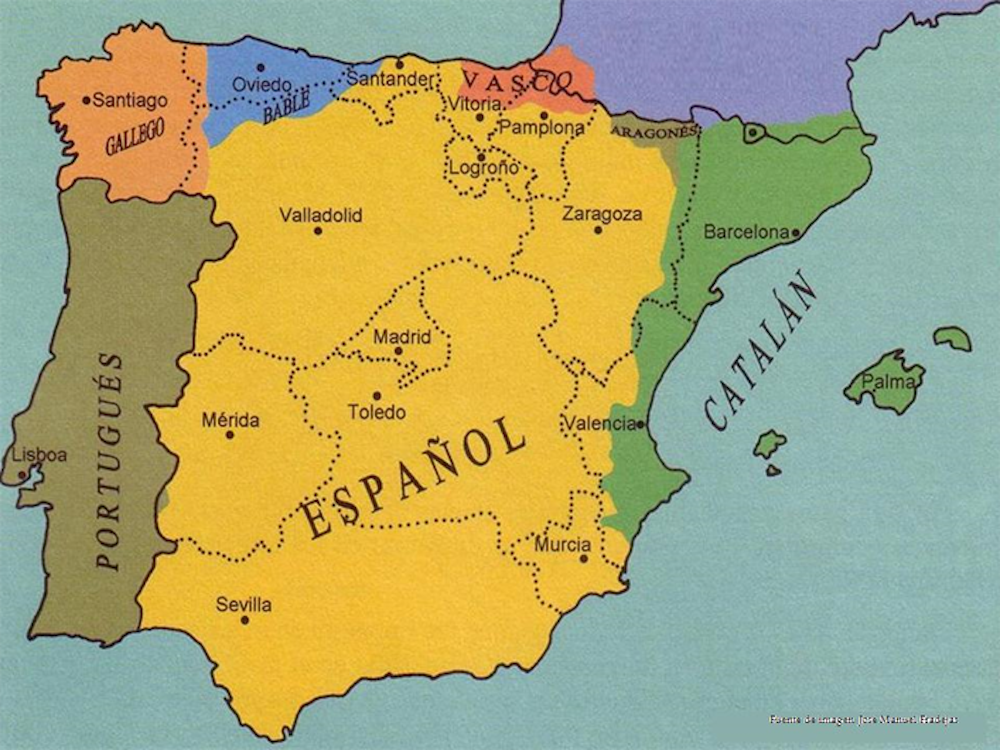
And while the letter ñ does not exist in Catalan, we use the combination ny to pronounce the same sound (that doesn’t seem to exist in English). The Spanish z is pronounced like the th in English in thigh, a sound that does not exist en Catalan as we pronounce z as in English zap (this sound existed in ancient Spanish but it’s not used anymore). Finally, in Catalan we do use the letter ç (non existent in modern Spanish), but it’s pronounced like an s.
Grammar and orthography
Ok, I’m aware that the previous point was pretty dense, and talking about grammar and orthography risked getting twice as dense… So let’s be very basic. In many aspects, Catalan grammar is more similar to French and Italian than to Spanish (what makes it easier for Catalan speakers to learn these languages, woohoo!). A good example of that is the use of weak pronouns like hi and en, non existent in Spanish.
Also, Spanish orthography is pretty straight forward, with few exceptions. Instead, learning Catalan language means memorizing lists and lists of exceptions. An interesting fact is that the English word “and” is “y” in Spanish and “i” in Catalan (both pronounced like English “e”). Catalan native speakers writing in Spanish often write “i” instead of “y”, not because lack of knowledge but because of writing on auto-pilot.
Want some Catalan and Spanish examples?
Many words in Catalan and Spanish are similar because they have common Latin roots. That’s also true when compared with other Romance languages discussed before). But completely different words aren’t rare.
My favorite example, and one that I use often in my tours when I’m asked about how is Catalan compared to Spanish, are the words for cat and dog. While the words for cat are very similar (gato in Spanish, gat in Catalan), the words for dog are completely different: in Spanish we say perro, while in Catalan we say gos.
And you know the funniest thing? Dogs in Spanish bark “guau guau”, while in Catalan they bark “bup bup”! (maybe we had smaller dogs in the past?). Lol.
Were you aware of the differences of Catalan vs Spanish?
Youtube
AUTHOR BIO
Marta is the founder of ForeverBarcelona.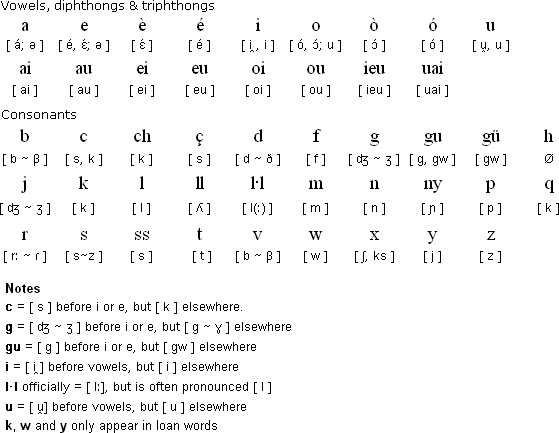
RESEARCHING FOR A TRIP IS TIME-CONSUMING…
Need more inspiration?
Our 100% FREE Barcelona Collection will give you everything you need to organize the trip of your lifetime to Barcelona.
BEST INSIDER TIPS FROM THE PROS!
MORE BARCELONA TIPS FOR YOU:
SHARE WITH YOUR TRAVEL MATES
Spanish and Catalan – what’s the difference?
What is the difference between Spanish and Catalan – and is there any at all? Asking a Catalan this is like asking him if there is a difference.
between land and sea – but we are not Catalans! It is enough for many of the tourists who have gathered on vacation in Spain to know that there is the Kingdom of Spain, and people live in it, who, naturally,
speak Spanish.
And so, armed with knowledge of Spanish obtained at school, college or intensive training courses, our people fly to Barcelona airport, and suddenly it turns out that at school, college
and in the courses they were taught what nonsense!
Because the inscriptions on all kinds of signs do not look at all as expected. Mystic! Is it Spain? And did we accidentally miss the country, landing, for example, in
Portugal?
No, it’s all right – you’re in Spain. But at the same time – also in Catalonia, on the territory of which the official (and dominant in all official areas) is the Catalan language, and it is from Spanish,
trust me, it’s different.
By the way, on the same signposts, the inscriptions are now given in three languages: Catalan (the main one in the territory of the Catalonia community), Spanish (national) and English (the language
international communication). It’s just that the inscription in Catalan comes first and, moreover, is made in a larger font.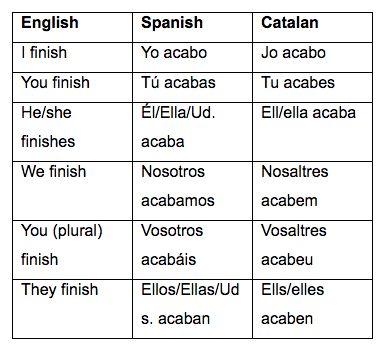
And the fact that the words do not coincide with what we learned under the guise of Spanish at school or somewhere else is simply explained: the Catalan language is still different from Spanish. In Catalan schools they study
both, but the vast majority of instruction is in Catalan, so that today’s children are bilingual as a result and can, depending on the situation,
use either one or the other. And now some more information about Spanish and Catalan in a Q&A format.
In accordance with the established linguistic tradition, the language itself and all the linguistic phenomena associated with it are usually called “Catalan” ( Catalan language, Catalan dialect,
Catalan phraseological unit ), but for everything else, the variant “Catalan” is used ( Catalan boy, Catalan donkey, Catalan territories ).
No. And if you, by the simplicity of your soul, ask such a question to a native Catalan, he will be offended to the core, although outwardly he will not show it.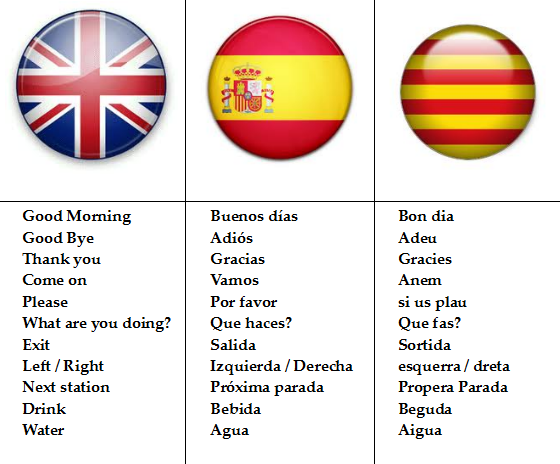
used in a certain part of the territory where its carriers live.
The Catalan language in this sense is not at all a dialect of Spanish – it is a completely independent language with its own grammatical, lexical, spelling and phonetic systems. This,
By the way, it is also reflected in the classification of languages: Spanish is classified as Ibero-Romance, Catalan is classified as Occitano-Romance.
No. Both are based on Latin, a language that became widespread due to the expansion of the Romans a couple of thousand years ago and gave rise to modern European Romance.
languages. Not only Catalan and Spanish, but also Portuguese, Italian, French, Romanian are related languages.
However, their formation took at one time more than a thousand years – and it proceeded differently under different conditions. These “conditions” in Castile (the center of Spain) and in Catalonia (the northeast) were
extremely different, which led, respectively, to the emergence of significant differences in languages.
Spanish has a much stronger Ibero-Celtic influence, while Catalan has an Occitan influence.
The oldest of the documents that have come down to us, written in ancient Catalan – “Sermons of Organya” (1080 – 1095) found in the chapel of the town of Organia in the province of Lleida. There are also earlier
sources (the feudal oath of 1028, but they are too brief and fragmentary for a full linguistic analysis).
The oldest text in Old Spanish is Glosas Emilianenses (late 900 AD) found in the monastery of San Millan de la Cojoglia (Rioja).
Here, as they say, the Spanish language does not leave the Catalan the slightest chance.
Thanks to the aggressive development of South America by the Spaniards, the Spanish language took root there tightly, and, as we know, far from one country, acquiring in each of them its own national
peculiarities. The so-called variants of the Spanish language were formed. That is why in Spain itself they prefer to call Spanish Castilian in order to separate this pure
“proto-language” from those variants in which the Hispanic nations of Latin America express themselves.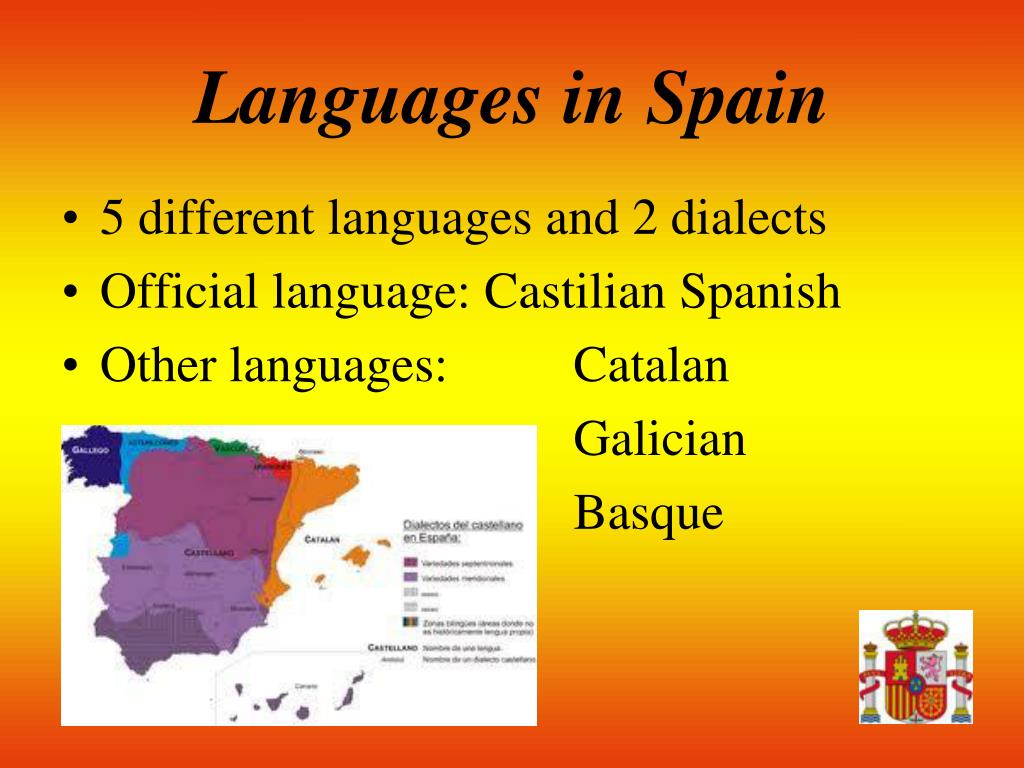
As for numbers, at least 90,003,470,000,000,90,004 people speak Spanish as their mother tongue, making it the second most common language in the world after, of course, Chinese.
As for Catalan, the “area” of its use is much narrower: in fact, Catalonia, Valencia, the Balearic Islands, the Eastern Pyrenees department in France, the Principality of Andorra, the city of Alghero on
the island of Sardinia – that’s probably all. Catalan is spoken as a native language by approximately 10,000,000 people. They understand it, but do not speak it (like dogs that understand everything, that’s just a pity,
can’t say anything) about 9 more0003 1 000 000 .
You will understand, you can be sure – because I have met many Spaniards who do not know the Catalan language, but I have not met a single Catalan who would not know Spanish. Spanish
the language, let’s not forget, is the national language – like Russian in the Soviet Union at one time, so that every citizen of Spain, whether Galician, Basque or Catalan, is in Spanish
speaks.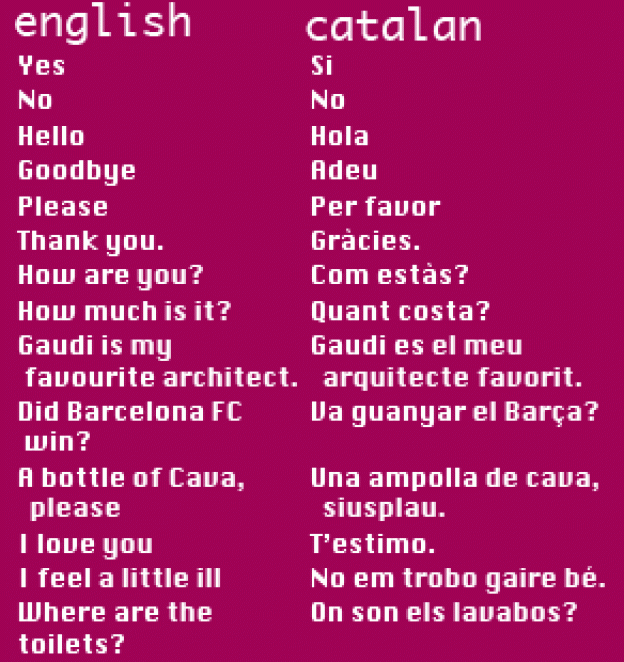
But we’re not talking about that! – you exclaim. How big are the differences in the same vocabulary between Catalan and Spanish? Not global, but essential – let’s answer this way.
Although most of the vocabulary of both languages (three-quarters) is identical or almost identical, the remaining 25% often contain the most “important words”, which greatly complicates the process
understanding if you are a Spaniard or came to a country with knowledge of Spanish and suddenly stumbled upon a surprise in the form of the Catalan language (in higher education, by the way, studying in Catalonia is also
conducted in Catalan).
A simple and illustrative example of the lexical differences between Catalan and Spanish is “cat-dog”. Catalan cat – gat in Spanish –
gato . Wonderful and very similar, almost one to one! – you will be delighted, and completely in vain.
Do not rush to rejoice, because in Spanish a dog is perro , and in Catalan – gos ! Go guess! And there are many such examples – so the difference between
Catalan and Spanish does exist, and quite substantial.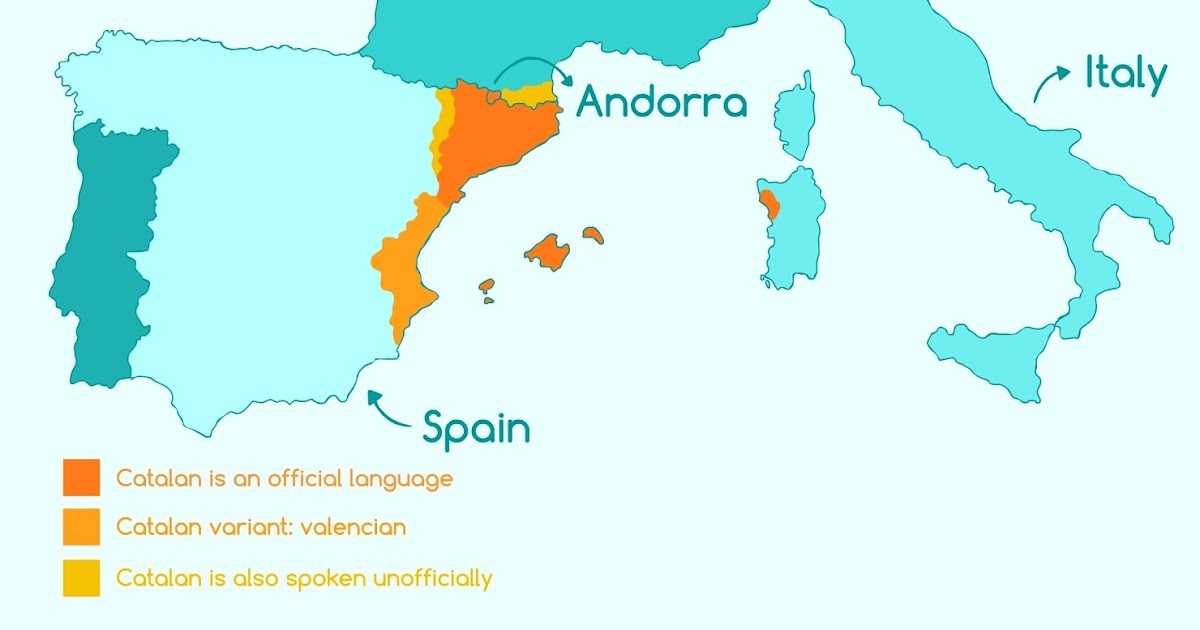
Spanish is now the native language and the language of everyday communication for the majority of the population of Catalonia. According to a government survey
Catalonia in 2013, Spanish is the mother tongue of 57.58% of citizens over the age of 15 registered in Catalonia, and Catalan is the mother tongue of 33.46%. According to the same study,
57.55% of citizens over the age of 15 use Spanish as the language of everyday communication, and 43.11% use Catalan.
OUR EXCURSIONS
TOP 12 EXCURSIONS IN BARCELONA
CHEAP AIR TICKETS ONLINE
What is the difference between Catalan and Spanish?
Contents
- 1 The history of the formation of the Catalan language
- 2 What is the difference between Catalan and Spanish?
- 3 Finally
Going on vacation, it would be good to know not only the prices and customs of the country, but also its state language.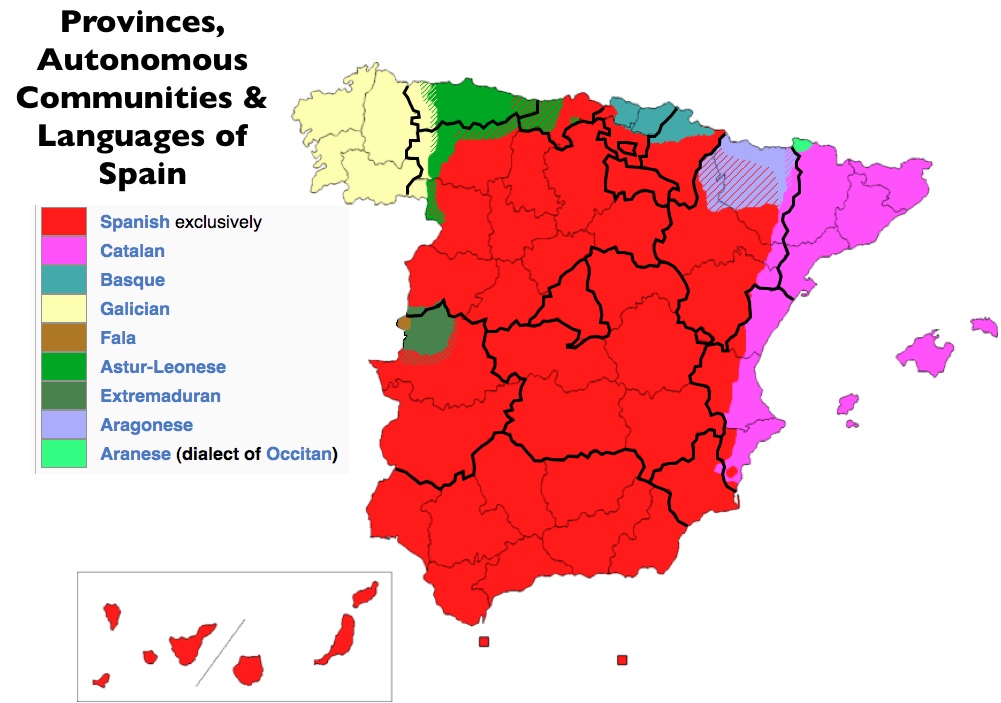
For Russians, their language has two pronunciations: Catalan and Catalan, they are also spelled differently. The name written through “o” is used when talking about the Catalans, but its counterpart with “a” is used in relation to their language. Based on this, when considering the features of the language, it is preferable to say “Catalan”.
The history of the formation of the Catalan language
It is noteworthy that the dialect in question was formed on the basis of Latin in the 9th century, which was practiced in a special pronunciation in the northern part of the Pyrenees.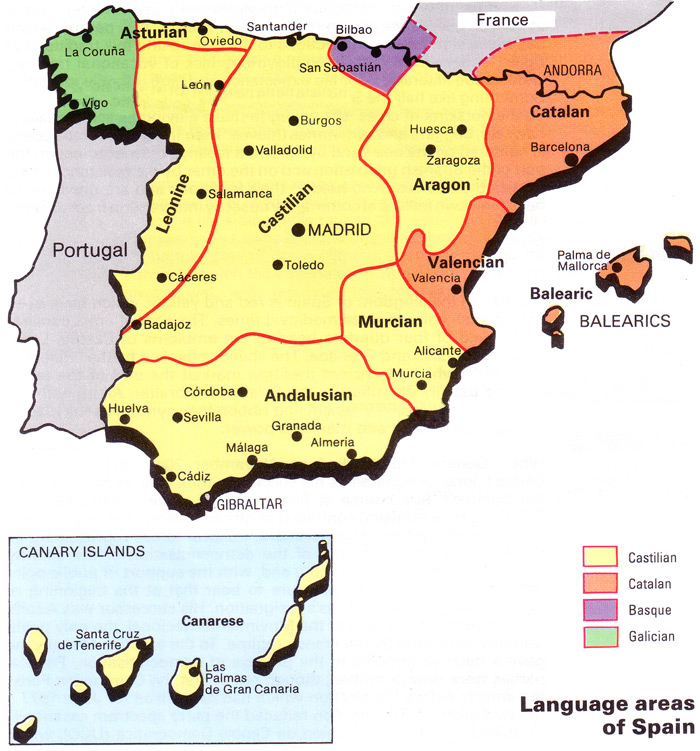
The recognized language belongs to the Romance group of the Indo-European language family . More than 11 million people speak and speak it, and not only in the Catalan lands, it can be heard in France, Italy, Andor and Spain itself. It is multifaceted and close to different language groups, for example, it is similar to Occitan, which is spoken by the inhabitants of the south of France.
What is the difference between Catalan and Spanish?
It should be noted right away that these are absolutely two different languages, they are not interchangeable.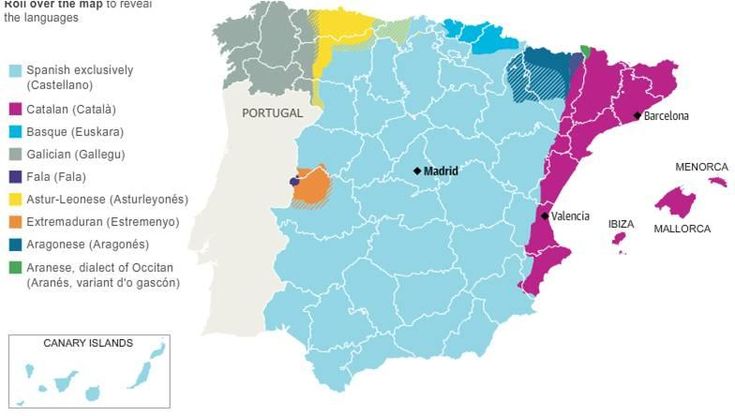
If we consider the origin and differences in depth, we can recall that in the VIII century the Hispanic territories were under the rule of the Muslims, while the Iberian Peninsula, where Catalan was spoken, was under the Moors. That is why it is so different from Spanish, it lacks Arabic words and expressions that are found in the conversation of the inhabitants of Spain. Catalan, on the other hand, is very close to Provençal, which has done him a disservice. Many, listening to the speech of the inhabitants of Catalonia, decided that they simply spoke a dialect similar to Provencal and did not want to recognize it as a separate language.
If we consider linguistic features, then the first thing that immediately indicates the difference between languages is the pronunciation of words ending in the form of the letter “d”.
- the presence in Catalan of the sonorants “tz” and “z”, as well as the hissing “x”;
- the absence of the Spanish double “ll” and interdental “s” with the sound of “z”.
When considering grammar, Catalan differs from Spanish in parts of speech:
- the prepositions in it are closer to French and Provençal ones;
- adverbs have many forms;
- infinitives end in “-ir”, “-ar” and “-er”, then in the Spanish version they are all replaced by one “-e”;
- verb conjugations are completely different from those in Spanish grammar.
Catalan is more similar to French, whoever heard it from a resident of Catalonia will think that he is communicating with the French, the pronunciations of the letters “z”, “g” and “sh” are so similar in these languages.
If we consider the system of vowels and consonants, then there are differences here:
- in words you can often notice the loss of vowels in the endings, sometimes they are closed and this leads to the formation of whole groups of consonants, which can be seen in the example: temps;
- regarding consonants, there is a muting of the sound of their voiced variants and an increase in the deaf ones, which, as it were, become voiced, if they stand at the end, then both their vocalization and their loss can be observed.
Travel words for tourists are summarized in a small table:
| Catalan | Russian |
| Hola | hello |
| Adeu | Goodbye |
| No ho entenc | I don’t understand |
| Gracies | Thank you |
| D’acord | Agreed |
| Jaens veurem | See you again |
| Perdoni | Sorry |
Finally
It is difficult to find a Catalan teacher in Russia, for those tourists who want to communicate normally with the inhabitants of Catalonia, it is worth buying “Digui, Digui.

